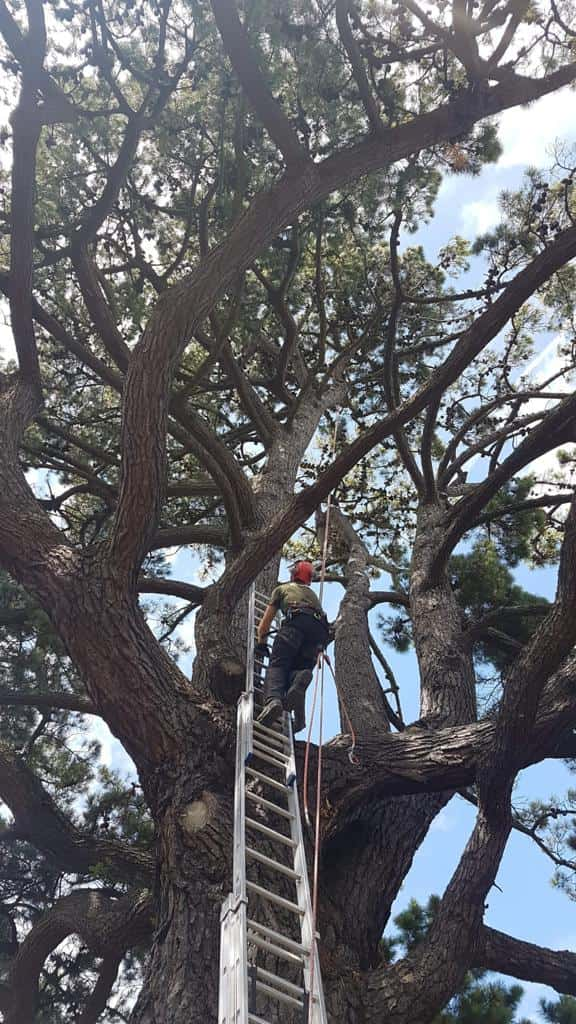Maintaining the health and appearance of your trees is an essential part of garden care, but without the right techniques, tree cutting can lead to unwanted regrowth and future maintenance headaches. At LM Tree Surgery Southsea, we understand the importance of using professional tree cutting methods that not only enhance the beauty of your landscape but also prevent unnecessary regrowth. Here’s how the right tree cutting techniques can save you time, money, and effort in the long run, especially for properties in Southsea, Hampshire.
The Importance of Proper Tree Cutting Techniques
Tree cutting, when done correctly, is not just about removing branches or shaping the tree. It’s about ensuring that the tree remains healthy and that regrowth is managed in a way that doesn’t cause future issues. Poor cutting techniques can result in:
- Vigorous Regrowth: Cutting a tree incorrectly can stimulate rapid regrowth, leading to more maintenance in the future. This is particularly common with species that respond to heavy pruning by producing numerous new shoots.
- Weakened Structure: Improper cuts can weaken the tree’s structure, making it more prone to disease, pests, and damage during storms. This not only affects the tree’s health but can also pose safety risks.
- Aesthetic Issues: Inconsistent or poorly executed cuts can lead to unsightly growth patterns, affecting the overall appearance of your garden.
Effective Tree Cutting Techniques
To avoid these issues, it’s crucial to employ effective tree cutting techniques that promote healthy growth and reduce the need for frequent maintenance:
- Correct Pruning Cuts
- Why It Matters: Pruning is one of the most common tree cutting activities, and making the correct cuts is essential for preventing disease and encouraging healthy growth. Cuts should be made just outside the branch collar (the swollen area where the branch meets the trunk), as this allows the tree to heal properly.
- Technique: Use clean, sharp tools to make precise cuts. Avoid cutting too close to the trunk or leaving a stub, as both can lead to problems such as decay and weak regrowth.
- Thinning Cuts
- Why It Matters: Thinning cuts involve removing entire branches back to the main trunk or another branch. This technique reduces the tree’s density, allowing more light and air to penetrate the canopy, which promotes healthier growth.
- Technique: Focus on removing overcrowded or crossing branches, as well as any that are dead or diseased. This not only improves the tree’s structure but also reduces the likelihood of future growth problems.
- Crown Reduction
- Why It Matters: Crown reduction is a technique used to reduce the overall size of the tree’s canopy. Unlike topping, which can cause significant damage, crown reduction is a more controlled method that maintains the tree’s natural shape while reducing its size.
- Technique: Selective pruning of the outer branches reduces the canopy size without affecting the tree’s overall health. This technique is particularly useful for managing trees that are growing too close to buildings or power lines.
- Pollarding
- Why It Matters: Pollarding is a pruning method that encourages the development of a dense head of foliage and branches. It’s often used for trees in urban areas where space is limited and regrowth needs to be controlled.
- Technique: Pollarding involves cutting back the tree to a framework of branches, from which new shoots grow. This method is typically started when the tree is young and maintained regularly to control growth.
- Directional Pruning
- Why It Matters: This technique is used to guide the tree’s growth in a specific direction, such as away from structures or other trees. It’s a preventative measure that reduces the need for more extensive cutting in the future.
- Technique: Cut branches that are growing in undesirable directions, focusing on promoting growth away from obstacles. This technique helps maintain the tree’s shape and prevents interference with buildings or utility lines.
Why Choose LM Tree Surgery Southsea?
At LM Tree Surgery Southsea, we are committed to providing expert tree care services that ensure the long-term health and beauty of your trees. Here’s why you should trust us with your tree cutting needs:
- Expert Knowledge: Our team has extensive experience in tree surgery, understanding the unique needs of different tree species and how to apply the best cutting techniques.
- Professional Equipment: We use the latest tools and equipment to carry out precise and effective tree cutting, ensuring that your trees are pruned correctly and safely.
- Customer Satisfaction: We pride ourselves on delivering high-quality service and ensuring our clients are satisfied with the results. Your trees are in good hands with LM Tree Surgery Southsea.
Conclusion
Proper tree cutting techniques are essential for maintaining the health and appearance of your trees while preventing future growth problems. By employing the right methods, you can reduce the need for frequent maintenance, save time and money, and ensure your trees contribute to a beautiful, well-kept garden.
Call us on: 023 8235 3277
Click here to find out more about LM Tree Surgery Southsea
Click here to complete our contact form and see how we can help with your tree needs.

